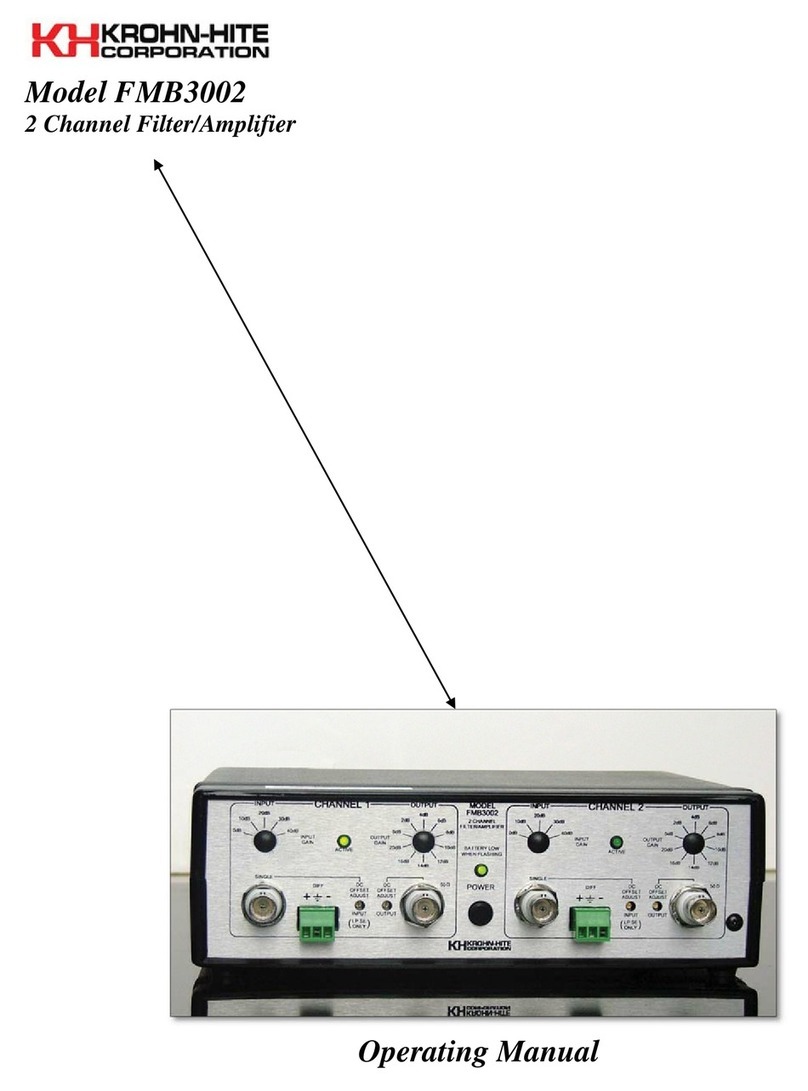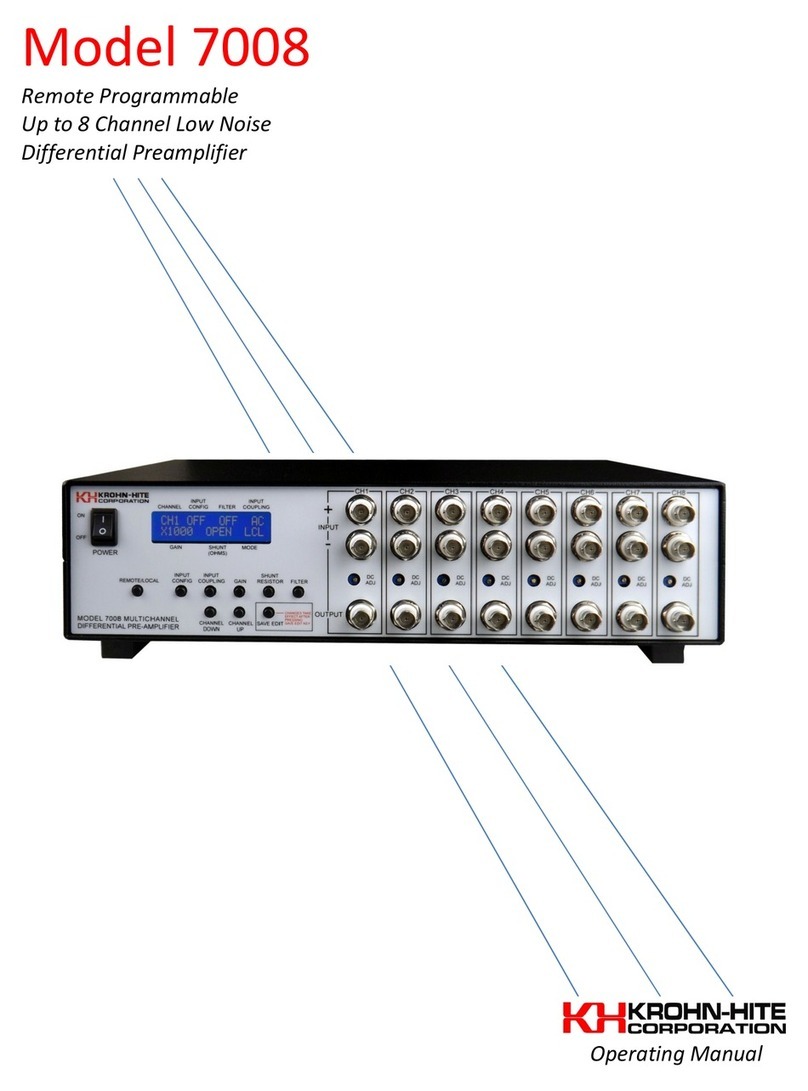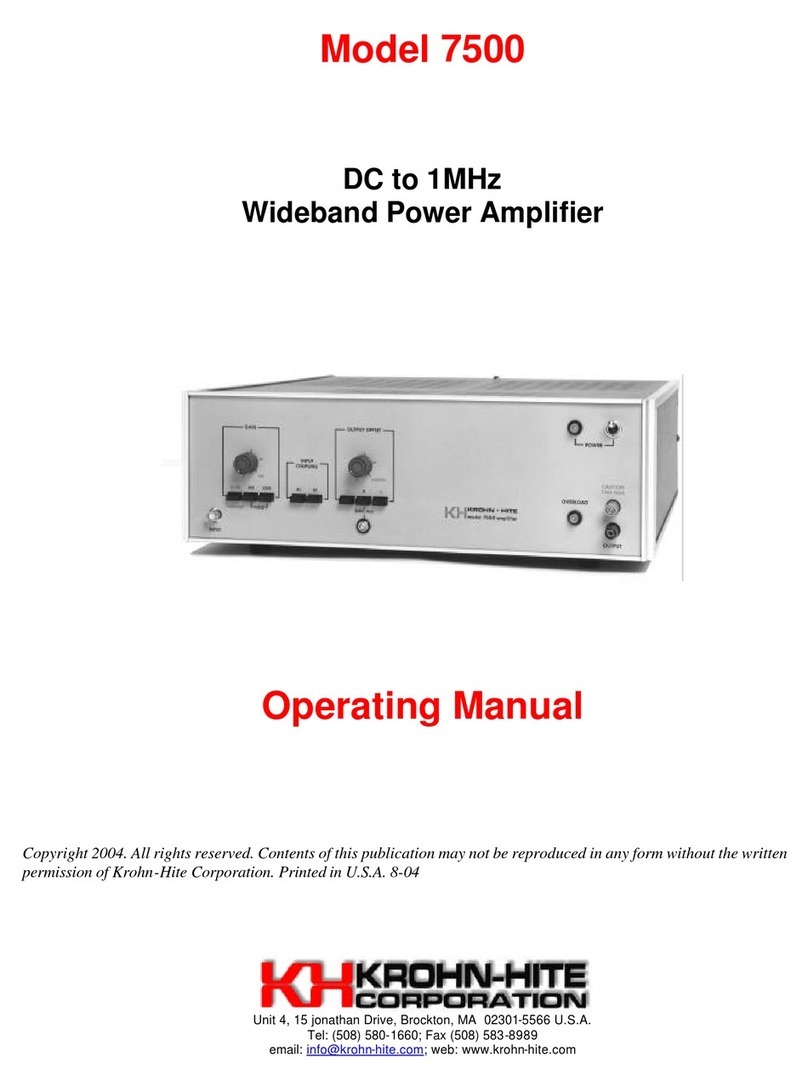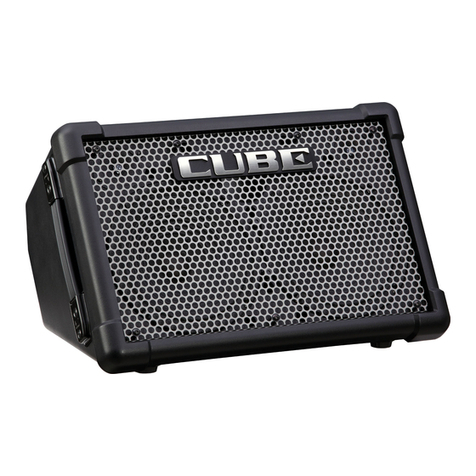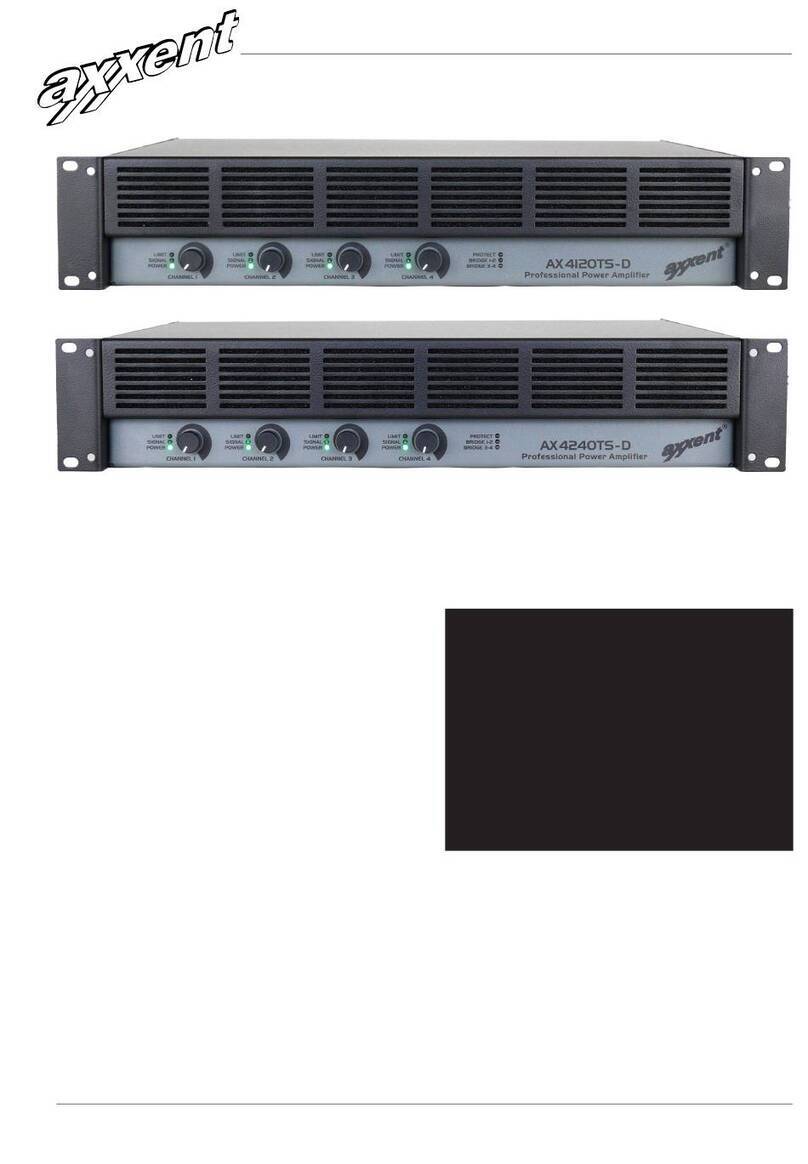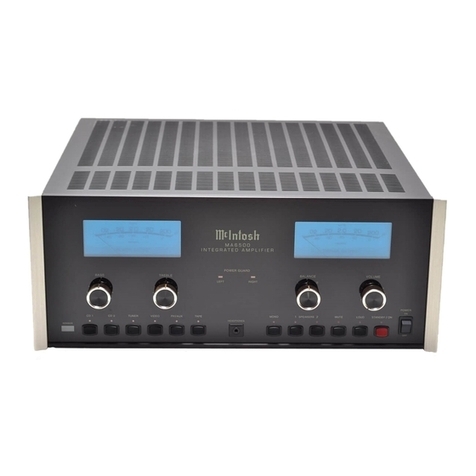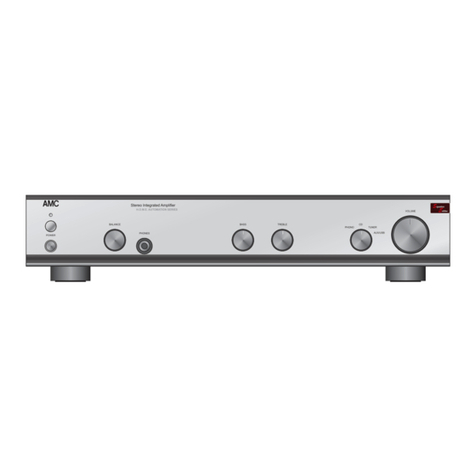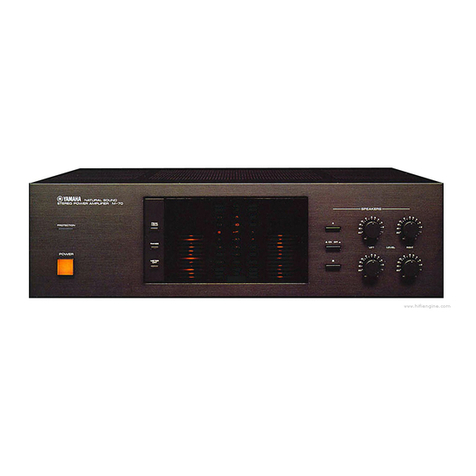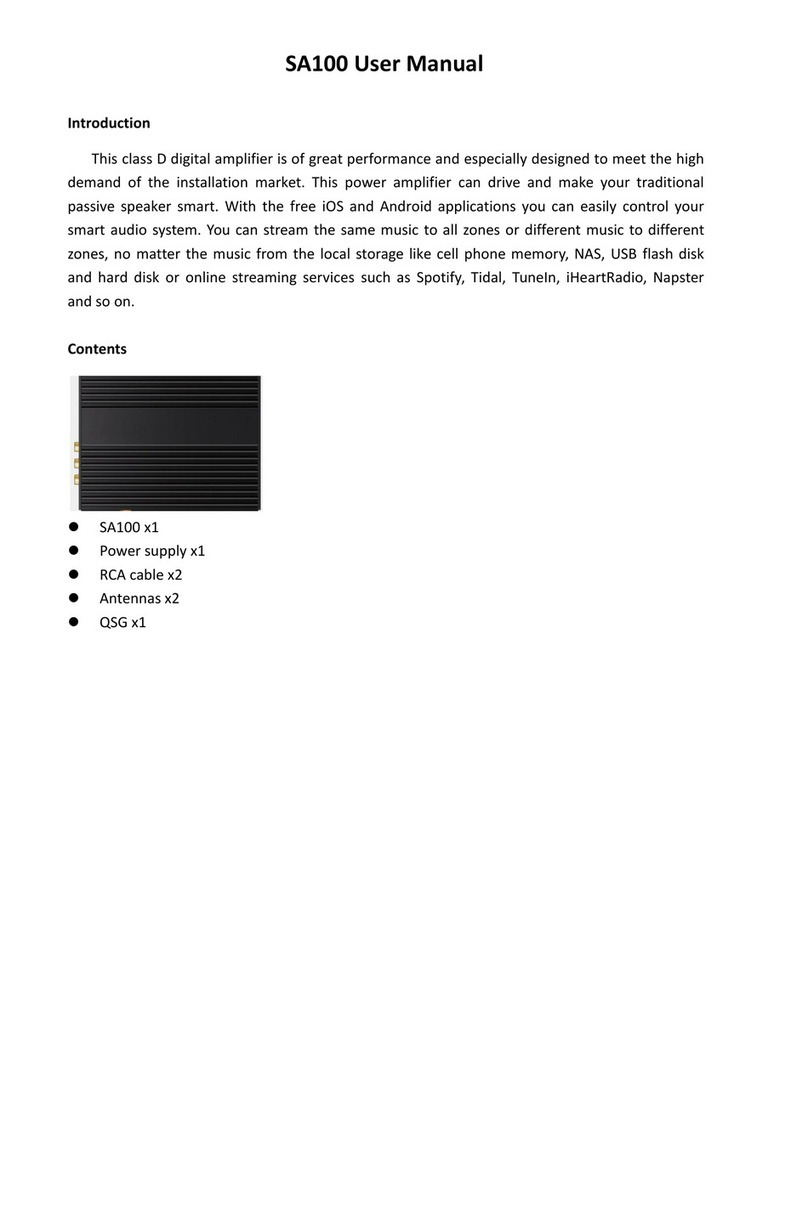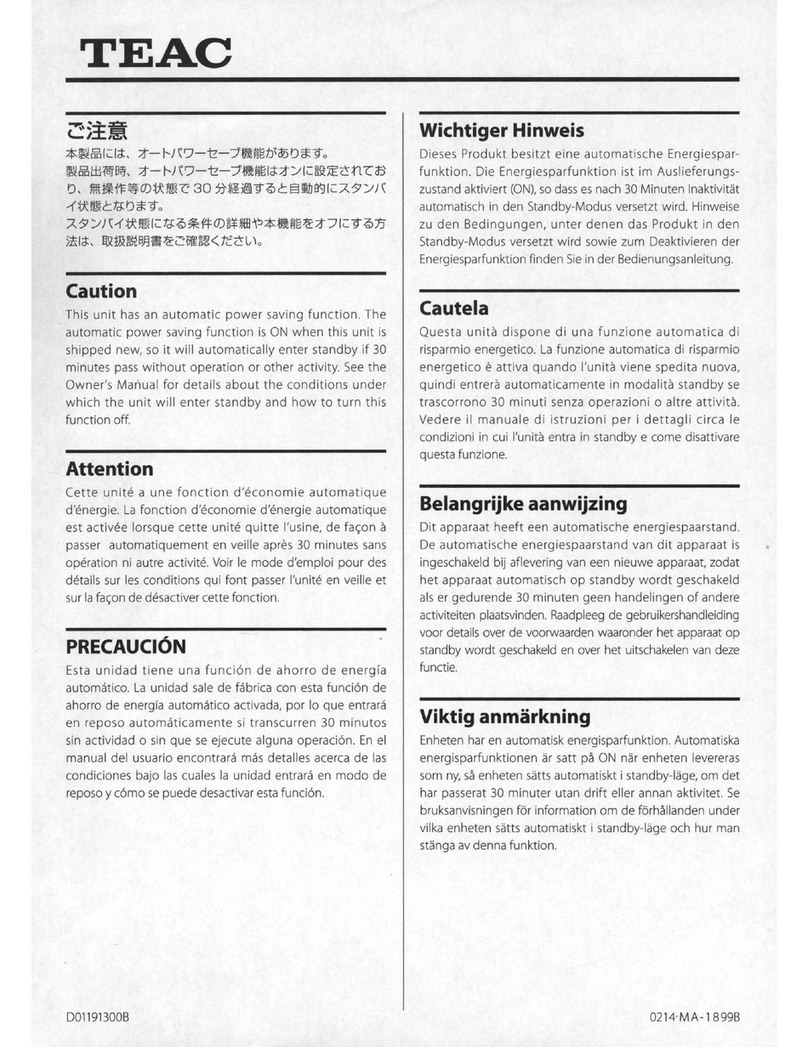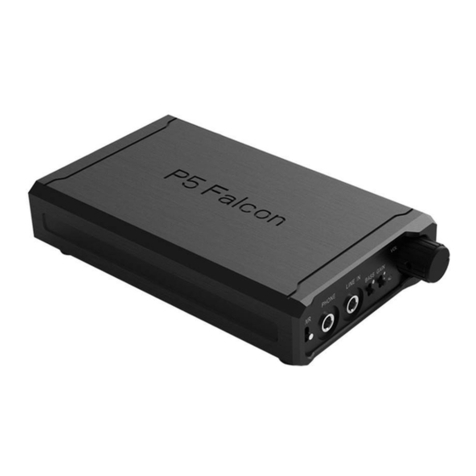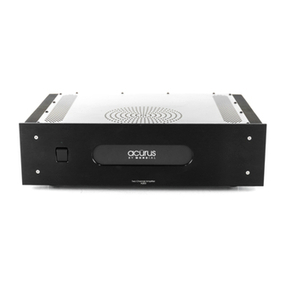Krohn-Hite 7620 User manual

7620 OPERATI
Model 7620
DC to 1MHz General Purpose
Wideband Power Amplifier
OPERATING MANUAL
Date: 3/5/20 Revision 1.0
Serial No. ___________________________
15 Jonathan Drive, Unit 4 Brockton, MA 02301-5566 U.S.A.
Tel: (508) 580-1660; Fax: (508) 583-8989
Copyright © 2020 Krohn-Hite Corporation
All rights reserved. Contents of this publication may not be reproduced in any form
without the written permission from Krohn-Hite Corporation


7620 OPERATING MANUAL TABLE OF CONTENTS
REV 1.0 i
TABLE OF CONTENTS
SECTION 1 PRODUCT DESCRIPTION AND SPECIFICATIONS...............................1
1.1 PRODUCT DESCRIPTION................................................................................1
1.2 PRODUCT SPECIFICATIONS...........................................................................2
1.2.1 OUTPUT......................................................................................................2
1.2.2 INPUT..........................................................................................................3
1.2.3 GENERAL ...................................................................................................4
1.3 REMOTE COMMUNICATION OPTIONS...........................................................4
1.4 OPTIONAL ACCESSORIES..............................................................................4
SECTION 2 OPERATION............................................................................................5
2.1 INTRODUCTION................................................................................................5
2.2 POWER REQUIREMENTS................................................................................5
2.3 INITIAL POWER-UP SEQUENCE.....................................................................5
2.4 INITIAL FUNCTIONAL TEST.............................................................................6
2.5 FRONT PANEL..................................................................................................7
2.5.1 KEYS...........................................................................................................7
2.5.2 LED INDICATORS ......................................................................................7
2.5.3 FRONT PANEL SELF-TEST.......................................................................7
2.5.4 POWER SWITCH........................................................................................8
2.5.5 INPUT CONNECTORS ...............................................................................8
2.5.6 OUTPUT CONNECTORS ...........................................................................8
2.6 REAR PANEL ....................................................................................................9
2.6.1 AC POWER RECEPTACLE (LINE).............................................................9
2.6.2 AC LINE FUSE............................................................................................9
2.6.3 AC LINE SWITCHES.................................................................................10
2.6.4 CHASSIS/FLOATING GROUND SWITCH................................................10
2.6.5 REMOTE COMMUNICATIONS PORT......................................................10
2.7 MENU ..............................................................................................................11
2.7.1 INPUT CONFIGURATION.........................................................................12
2.7.2 INPUT COUPLING....................................................................................13
2.7.3 AGA (AUTOMATIC GAIN ADJUST)..........................................................14
2.7.4 SAVE SETUP............................................................................................15

TABLE OF CONTENTS 7620 OPERATING MANUAL
ii REV 1.0
2.7.5 RECALL SETUP........................................................................................15
2.7.6 REMOTE ADDRESS (GPIB/LAN).............................................................16
2.7.7 DEVICE INFORMATION...........................................................................17
2.7.8 SOUND......................................................................................................18
2.7.9 EXIT...........................................................................................................18
2.8 DC OFFSET.....................................................................................................19
2.9 OUTPUT GAIN.................................................................................................20
2.10 GAIN RANGE ...............................................................................................21
2.11 PREVIOUS SETTING (ENTER) KEY...........................................................22
2.12 HEATSINK TEMPERATURE MONITOR......................................................23
2.13 AVERAGE CURRENT MONITOR................................................................23
2.14 OUTPUT VOLTAGE MONITOR ...................................................................24
2.15 DEFAULT SETTINGS...................................................................................25
SECTION 3 REMOTE COMMUNICATION................................................................27
3.1INTRODUCTION..............................................................................................27
3.2 GPIB/IEEE-488 SETUP ...................................................................................27
3.3 GPIB/IEEE-488 INTERFACE COMMANDS.....................................................27
3.4 REMOTE PROGRAMMING COMMANDS.......................................................29
3.5 LAN (LOCAL AREA NETWORK) SETUP........................................................31
3.5.1 NETWORK CONNECTION.......................................................................31
3.5.2 DIRECT PC CONNECTION......................................................................31
3.5.3 FIND UNIT’S IP ADDRESS .......................................................................32
3.5.4 SET A STATIC IP ADDRESS....................................................................34
3.6 LAN COMMUNICATION..................................................................................35
3.7 USB SETUP.....................................................................................................36
3.8 USB COMMUNICATION..................................................................................37
SECTION 4 INCOMING ACCEPTANCE....................................................................39
4.1 INTRODUCTION..............................................................................................39
4.2 REQUIRED TEST EQUIPMENT......................................................................39
4.3 FRONT PANEL SELF-TEST............................................................................39
4.4 DC OFFSET AND PEAK VOLTS DISPLAY CHECK .......................................40
4.5 SQUARE WAVE BROADBANDING CHECK...................................................40

7620 OPERATING MANUAL TABLE OF CONTENTS
REV 1.0 iii
4.6 SQUARE WAVE RISE AND FALL TIME CHECK............................................41
4.7 SLEW RATE CHECK.......................................................................................41
4.8 GAIN CALIBRATION CHECK..........................................................................42
4.9 FREQUENCY RESPONSE CHECK ................................................................43
4.10 1K LOAD MAXIMUM POWER......................................................................43
4.11 DISTORTION CHECK..................................................................................44
SECTION 5 SERVICE AND WARRANTY..................................................................45
5.1 SERVICE .........................................................................................................45
5.2 WARRANTY.....................................................................................................45
5.3 CLAIM FOR DAMAGE IN SHIPMENT TO PURCHASER................................45
5.4 SHIPPING TO KROHN-HITE FOR REPAIR OR CALIBRATION.....................46

SAFETY PRECAUTIONS 7620 OPERATING MANUAL
iv REV 1.0
SAFETY PRECAUTIONS
The following general safety precautions must be observed during all phases of operation,
service, and repair. Failure to comply with these precautions or with specific warnings elsewhere
in this manual violate safety standards of design, manufacture and intended use of this
instrument. Krohn-Hite assumes no liability for the customer’s failure to comply with these
requirements. For the correct and safe use of this instrument, operating and service personnel
must follow generally accepted safety procedures.
HIGH VOLTAGE WARNING
Potentially lethal voltages may be present on the instrument’s output terminals. Please observe
all safety precautions when operating this instrument.
POWER SOURCE
The 7620 is designed to operate from a 105Vrms to 240Vrms AC source. The protective ground
connection, provided by the grounding conductor in the power cord, is essential for safe
operation. Refer to section 2.2 for complete power requirements and section 2.3 to configure the
power input.
PROPER FUSE
To avoid damage to the 7620 or to prevent a fire hazard, use the correct fuse for the line voltage
selected. Refer to section 2.6.2 for proper fuse rating.
ENVIRONMENTAL WARNING
Do not operate the instrument in the presence of flammable gases or fumes. Do not operate the
instrument in damp, wet or dusty environments. Operation of this instrument in such
environments constitutes a safety hazard.
DO NOT REMOVE COVER
Operating personnel must not remove the instrument covers. Only qualified maintenance
personnel following proper safety precautions may remove the cover. To avoid injuries, always
disconnect the AC line cord and disconnect all cables and equipment from the input and output
terminals before removing the covers.
DO NOT SUBSTITUTE PARTS OR MODIFY INSTRUMENT
To avoid damaging the instrument, causing injuring or creating unsafe conditions, do not install
substitute parts or perform any unauthorized modifications. For service and repairs contact
Krohn-Hite.
DO NOT OPERATE A DAMAGED INSTRUMENT
Do not operate the instrument if it is damaged. Disconnect the AC line cord and disconnect all
cables and equipment from the input and output terminals. For service and repairs contact
Krohn-Hite.

7620 OPERATING MANUAL SECTION 1
REV 1.0 1
SECTION 1 PRODUCT DESCRIPTION AND
SPECIFICATIONS
1.1 PRODUCT DESCRIPTION
The 7620 wideband power amplifier offers extended output power and voltage
capabilities with low distortion, using the latest in hybrid power operational amplifier
technology. This makes the 7620 suitable for a broad array of applications.
With two inputs, both non-inverted and inverted, the unit is configurable for either single-
end or differential operation. A maximum input voltage of ±200V, AC or DC, and a
frequency range from DC to 1MHz, allows for a wide range of input signals.
Additionally, the two outputs, either non-inverted or inverted, provide a maximum
voltage of ±200V and 200mA (34W maximum).
The instrument is operated either using the local front panel controls and menu driven
configuration, or remotely through the standard GPIB port, or optional LAN or USB
connections.
Features include DC offset, 0V to ±200V in 0.1V increments, and three selectable gain
ranges X5, X25 and X125 with incremental output gain control, as well as, an automatic
gain adjustment setting with clipping control. These settings are controlled in real-time
using the front panel buttons or remotely and all active settings are shown on the two-line
display.
In addition, the unit continuously monitors and displays the heatsink temperature, output
peak voltage and average output current to warn of any potential issues. Warnings are
triggered to alert the user of the problem condition and to prevent damage to equipment.
The unit is equipped with ten unique memory locations used to store pre-configured
setups and a recall function to quickly restore the unit to a previous configuration.
All the information needed to operate this instrument is contained in this manual. For
application specific information or other questions, please contact Krohn-Hite.

SECTION 1 7620 OPERATING MANUAL
2 REV 1.0
1.2 PRODUCT SPECIFICATIONS
1.2.1 OUTPUT
Note: All values are measured from each output to GND.
Frequency Range: DC to 1MHz
Power:
o1kΩ Load:
17Wrms (34W DC) (DC to 500kHz)
5Wrms (500kHz to 1MHz)
o600Ω Load:
4Wrms (9W DC) (DC to 100Hz)
9Wrms (100Hz to 1MHz)
Voltage:
oNo Load to 10kΩ:
±200Vpeak (141Vrms)
o1kΩ Load:
±200Vpeak (141Vrms) AC or DC (DC to 200kHz)
±160Vpeak (113Vrms) AC (200kHz to 500kHz)
±106Vpeak (75rms) AC (500kHz to 1MHz)
o600Ω Load:
±113Vpeak (80Vrms) (100Hz to 1MHz)
±73Vpeak (52Vrms) (DC to 100Hz)
Current: 910Ω load ±200mApeak (141mArms) (DC to 500kHz)
Frequency Response:
o±0.5dB DC to 1MHz
Harmonic Distortion:
o0.02% (typical), 0.05% (max)
Voltage Gain Ranges:
oX5: X0.0 to X5.0 (X0.1 increments)
oX25: X0.0 to X25.0 (X0.5 increments)
oX125: X0.0 to X125 (X1.0 increments)
Step Accuracy: ±0.1dB plus frequency response specification
Stability: < 0.001dB change for each 10% change in line voltage.
Dynamic Range: > 70dB
Hum and Noise (2MHz bandwidth): referred to output, < 20mVrms
Phase Shift: A input 0° ±1°, -B input, 180° ±1° dc to 10kHz
increasing linearly 60° lagging at 1MHz. (Inverted output relative
to non-inverted) 180°, –0.3° at 10kHz; 180°, –3° at 100kHz; 180°,
–20° at 1MHz.

7620 OPERATING MANUAL SECTION 1
REV 1.0 3
Square wave Response:
oRise/Fall Time: 200ns to 100Vp-p
oSlew Rate: > 500V/µs, 400Vp-p
Regulation: < 0.1% with no load to 1kΩ (DC to 10kHz), rising to
2% at 1MHz.
DC Coupling:
oDC Level: Nominal zero volts; vs. temperature, 2mV/°C.
oDC Offset Control (no load): 0V to ±200V.
oDC Level Stability
Vs. Line: < 1mV for each 10% change in line voltage
Vs. Temperature: < 0.01%/°C or 2mV/°C (whichever is
greater)
Internal Impedance:
o< 0.5Ω (DC to 10kHz)
o5Ω (10kHz to 100kHz)
o20Ω (100kHz to 1MHz)
1.2.2 INPUT
Configurations:
oA (Single-Ended, Non-Inverted)
o-B (Single-Ended, Inverted)
oA–B (Differential)
Maximum Voltage: ±200VDC (referenced to ground)
Maximum Common Mode:
oX5 range: ±200Vpeak
oX25 range: ±40Vpeak
oX125 range: ±8Vpeak
Common Mode Rejection:
o70dB: DC to 200Hz (at max gain setting)
o60dB: 200Hz to 1kHz (at max gain setting)
o40dB: 1kHz to 10kHz (at max gain setting)
o20dB: 10kHz to 1MHz (at max gain setting)
Note: Improves to < 80dB at lower gain settings.
Sensitivity: ±1.6V peak
Coupling: Direct (DC) or capacitive (AC) with low frequency
cutoff of approximately 1Hz
Impedance: 1 MΩ in parallel with 30pF

SECTION 1 7620 OPERATING MANUAL
4 REV 1.0
1.2.3 GENERAL
Temperature Range: 0°C to 45°C.
Power Requirements: 120V or 240V, 50Hz-400Hz, 200W
Dimensions: 14” W (35.6cm) x 13.64” L (34.6cm) x 3.5” H (8.9 cm)
4” H (10.2 cm) with feet installed
Weight: 12.8 lbs. (5.81 kg.)
1.3 REMOTE COMMUNICATION OPTIONS
The standard 7620 is equipped with a GPIB/IEEE-488 remote communications port. An
optional LAN or USB option is also available. Please specify which option you prefer
when placing your order.
IEEE-COM (standard) - 24-Pin, Female Connector
LAN-COM (optional) –RJ45 Connector
USB-COM (optional) –Mini Type B 5-Pin Connector
1.4 OPTIONAL ACCESSORIES
RK-314: Rack Mount Kit (for mounting the 7620 into a standard 19" rack)
CAB-10: GPIB Cable with Connectors (2 meters)
CAB-11: GPIB Cable with Connectors (1 meter)
CAB-018: Cable, Multi-Stacking Double Banana Plug
CAB-025: BNC Cable (3 Feet)
7620EXT: One Year Extended Warranty

7620 OPERATING MANUAL SECTION 2
REV 1.0 5
SECTION 2 OPERATION
2.1 INTRODUCTION
This section describes the operation of the Model 7620. It includes the proper AC
requirements, the initial power-up procedure, initial functional test and a detailed
explanation of the operating controls.
2.2 POWER REQUIREMENTS
The Model 7620 Amplifier operates from a single-phase, 50Hz to 400Hz AC power
source with the following voltage ranges:
90V to 110V
108V to 132V
198V to 242V
216V to 264V
The unit is equipped with a standard 3-pin AC power receptacle on the rear panel, which
complies with the European I.E.C. A standard detachable 3-wire line cord is supplied.
2.3 INITIAL POWER-UP SEQUENCE
Use the following procedure when powering up the 7620 for the first time, or if your
power requirements change:
CAUTION: Verify the power cord is disconnected and the power
switch is in the off position. Due to potentially dangerous voltage
within the 7620, do not remove the covers when the unit is connected
to an AC outlet.
1. Set the line switches on the rear panel to the desired voltage range:
For the 90 to 110 voltage range: set the voltage range switch to 120V and the
NORM/LOW switch to LOW.
For the 108 to 132 voltage range: set the voltage range switch to 120V and the
NORM/LOW switch to NORM.
For the 198 to 242 voltage range: set the voltage range switch to 240V and the
NORM/LOW switch to LOW.
For the 216 to 264 voltage range: set the voltage range switch to 240V and the
NORM/LOW switch to NORM.
2. Set the CHASSIS/FLOAT GROUND switch on the rear panel to the desired ground
setting.
CAUTION: The unit must be connected to a grounded, 3-terminal AC
outlet.

SECTION 2 7620 OPERATING MANUAL
6 REV 1.0
3. Plug the line cord into the unit and then into the AC outlet.
4. Turn the power switch on and allow the unit to warm-up for 30 minutes before
using to achieve optimal performance specifications.
When the unit turns on, all front panel LEDs are momentarily illuminated (except >15V)
and KROHN-HITE 7620 POWER-UP appears on the display.
2.4 INITIAL FUNCTIONAL TEST
To verify the 7620 is operating correctly, use the following steps:
1. Follow the power-up sequence described in the previous section.
2. Set the DC OFFSET to zero by pressing the ZERO front panel key.
3. Set the GAIN to zero using the GAIN DOWN front panel key.
4. Set the INPUT MODE to OFF using the menu system.
5. Set the INPUT COUPLING to DC using the menu system.
6. Connect a voltmeter to the output terminals and check for 0V DC.
When finished, set the OFFSET, GAIN, INPUT COUPLING and INPUT
CONFIGURATION and other settings, as described in the following sections, to meet
your requirements.
Caution: The output terminals can reach up to 400V peak. To prevent
possible electrical shock, set the output switch to DISCONNECT
before connecting/disconnecting cables or loads from the output
terminals.

7620 OPERATING MANUAL SECTION 2
REV 1.0 7
2.5 FRONT PANEL
2.5.1 KEYS
KEY
PRIMARY FUNCTION
SECONDARY FUNCTION
MENU (LOCAL)
Enter the menu and scroll
through menu options.
Place the unit in local mode.
ENTER (PREV SETTING)
Select menu option and
implement new setting.
Restore previous setting.
ZERO
Set DC offset to zero.
Set gain range to X1.0 (if
pressed while holding GAIN
RANGE down arrow)
DC OFFSET (UP)
Adjust DC offset up.
Change menu setting up.
DC OFFSET (DOWN)
Adjust DC offset down.
Change menu setting down.
GAIN RANGE
Change gain range.
(no second function)
OUTPUT GAIN (UP)
Adjust output gain up.
Change menu setting up.
OUTPUT GAIN (DOWN)
Adjust output gain down.
Change menu setting down.
2.5.2 LED INDICATORS
LED
DESCRIPTION
REMOTE
Solid when unit is in remote mode.
INPUT CLIPPING
Flashes when input signal is clipping (AGA mode setting 1 only).
CLIPPING (OUTPUT)
Flashes when output signal is clipping (AGA mode setting 1 only).
AGA
Solid when AGA setting 1 or 2 enabled. Flashes when input/output signal is
clipping (AGA mode setting 1 only).
>15V
Solid when output voltage is greater than ±15V.
2.5.3 FRONT PANEL SELF-TEST
To ensure the 7620 front panel is functioning properly use the built-in self-test
feature. To initiate a front panel self-test, press both the MENU and ENTER keys
simultaneously. The unit presents instructions on the display that direct you to
press each key, verify LED function and sound operation. When the self-test is
complete, the unit returns to normal operation.

SECTION 2 7620 OPERATING MANUAL
8 REV 1.0
2.5.4 POWER SWITCH
The unit’s power switch is located on the upper left side of
the front panel. To turn the unit on, flip the switch to the ON
(I) position. To turn the unit off, flip the switch to the OFF
(O) position.
2.5.5 INPUT CONNECTORS
The 7620 has both a non-inverted (A) and an inverted
(-B) input BNC connector. The center pin is the signal
connection and the outer shell is GND. Please refer to
section 1.2.2 for complete specifications. By default
both inputs are disabled; refer to section 2.7.1 to
configure the inputs.
2.5.6 OUTPUT CONNECTORS
The two red binding posts are the signal outputs and the black binding post is the
output ground (GND).
Non-Inverted Output
Inverted Output
To enable the outputs, flip the switch to the
CONNECT (I) position. To disable the outputs,
flip the switch to the DISCONNECT (O) position.
When in remote mode the switch is not required
to disable the output. In remote mode, put the
switch in the CONNECT position and use the
remote commands to enable or disable the output.

7620 OPERATING MANUAL SECTION 2
REV 1.0 9
2.6 REAR PANEL
2.6.1 AC POWER RECEPTACLE (LINE)
The unit is equipped with a standard 3-pin AC power receptacle, which complies
with the European I.E.C. The accepted AC line voltage is either 120V or 240V,
single-phase, 50Hz to 400Hz. A standard detachable 3-wire line cord is supplied.
Please refer to section 2.2 for further details.
2.6.2 AC LINE FUSE
The AC line fuse, located near the AC receptacle, is installed at the factory. The
fuse rating corresponds with the line voltage specified when you ordered the
instrument.
The fuse is a 5 x 20mm cylindrical cartridge style fuse. Below is the required fuse
rating for each line voltage and the recommended manufacturer and part number.
120V: 3.15A SLO BLO (Bel Fuse # 5ST 3.15-R)
240V: 2A SLO BLO (Bel Fuse # 5ST 2-R)
CAUTION: Remove the AC line cord before changing the line fuse.
To change the fuse, insert a flat-bladed screwdriver into the slot and turn counter-
clockwise until the fuse holder releases. Gently remove the fuse from the unit and
replace it with the value rated for your line voltage. Insert the fuse back into the
unit by lining up the tabs with the slots in the fuse holder on the chassis, and then
turn clockwise.

SECTION 2 7620 OPERATING MANUAL
10 REV 1.0
2.6.3 AC LINE SWITCHES
You must configure the two AC line switches (LOW/NORM and 240V/120V)
prior to powering-up the amplifier. Set the switches to correspond to your line
voltage. Below are the four possible combinations.
For the 90 to 110 voltage range: set the voltage range switch to 120V and
the NORM/LOW switch to LOW.
For the 108 to 132 voltage range: set the voltage range switch to 120V and
the NORM/LOW switch to NORM.
For the 198 to 242 voltage range: set the voltage range switch to 240V and
the NORM/LOW switch to LOW.
For the 216 to 264 voltage range: set the voltage range switch to 240V and
the NORM/LOW switch to NORM.
For quick references, these settings are also listed in the table on the unit’s rear
panel.
2.6.4 CHASSIS/FLOATING GROUND SWITCH
Use the CHASSIS/FLOATING GROUND switch to connect the 7620 chassis to
signal ground, or to break the connection.
CHASSIS position: The chassis is shorted to the amplifier’s signal ground.
FLOATING position: The chassis and signal ground are disconnected.
Please note the chassis is tied directly to the ground connection on the AC
receptacle.
2.6.5 REMOTE COMMUNICATIONS PORT
A GPIB/ IEEE-488 port is installed in the standard 7620 unit. An optional LAN
or USB port is available upon request.

7620 OPERATING MANUAL SECTION 2
REV 1.0 11
2.7 MENU
The 7620 menu consists of the nine selections listed below:
1. INPUT CONFIG (Input Configuration, Section 2.7.1)
2. INPUT COUPLING (Section 2.7.2)
3. AGA (Automatic Gain Adjustment, Section 2.7.3)
4. SAVE SETUP (Section 2.7.4)
5. RECALL (Section 2.7.5)
6. REMOTE ADDRESS (GPIB/MAC, Section 2.7.6)
7. DEVICE INFORMATION (Serial Number and Software Version, Section 2.7.7)
8. SOUND (Section 2.7.8)
9. PRESS ENTER TO EXIT MENUS (Section 2.7.9)
Each menu selection is described in detail in the following sections.
To enter the menu, press the MENU key. Pressing the MENU key displays the first item
in the list. To scroll through the menu, continue pressing the MENU key until you reach
the desired option.
To select a menu option, press the ENTER key. Pressing the ENTER key activates that
menu option and allows you to change the setting. When you activate the menu option,
the setting flashes. To change the setting, press the up and down arrows, below the
display, underneath either DC OFFSET or OUTPUT GAIN, until you reach the desired
setting. Press the ENTER key to implement your changes and exit back to the menu.
CAUTION: All setting changes are implemented immediately upon
pressing the ENTER key.
To exit the menu, scroll to option nine and press the ENTER key. The menu also times
out after seven seconds of inactivity and the unit returns to normal operation.

SECTION 2 7620 OPERATING MANUAL
12 REV 1.0
2.7.1 INPUT CONFIGURATION
Input Configuration refers to the operation of the input connectors. You can
change this setting through option one, INPUT CONFIG, in the menu system.
You can choose between four settings: OFF, A, -B or A-B.
OFF: Inputs are inactive
A: Input A is active (single-ended, non-inverted)
-B: Input –B is active (single-ended, inverted)
A-B: Inputs A and –B are active (differential)
To change the input configuration, press the MENU key to enter the menu.
INPUT CONFIG is the first menu item. Press the ENTER key, then use the up
and down arrows to scroll through the options. Finally, press the ENTER key to
change the setting.
CAUTION: Pressing the ENTER key changes the INPUT CONFIG
setting immediately and activates/deactivates the inputs in real-time.
To exit the menu, either scroll to option nine and press the ENTER key or wait
until the menu times out.
The active setting is located on the top line of the display below INPUT CONFIG.

7620 OPERATING MANUAL SECTION 2
REV 1.0 13
2.7.2 INPUT COUPLING
The 7620 inputs accept either AC or DC signals. You must configure the inputs
for your mode of operation using the INPUT COUPLING option. By default, the
unit is set for AC. In this mode, there is a capacitor in both input signal paths to
block DC signals. When DC is active, the unit bypasses the capacitors in the input
paths to pass DC signals through. This setting affects both the A and –B inputs
together.
To change the input coupling setting, press the MENU key to enter the menu, and
then press the MENU key again to scroll to INPUT COUPLING, which is the
second menu item. Press the ENTER key, then use the up and down arrows to
select either AC or DC. Finally, press the ENTER key to change the setting.
CAUTION: Pressing the ENTER key changes the INPUT
COUPLING setting immediately and changes the inputs in real-time.
To exit the menu, either scroll to option nine and press the ENTER key or wait
until the menu times out.
The active setting is located on the bottom line of the display above INPUT
COUPLING.

SECTION 2 7620 OPERATING MANUAL
14 REV 1.0
2.7.3 AGA (AUTOMATIC GAIN ADJUST)
The Automatic Gain Adjust (AGA) feature prevents the unit from clipping the
input or output signal. When enabled, the unit automatically reduces the output
gain to eliminate output clipping and lowers the input gain range to eliminate
input clipping. AGA is disabled by default and is controlled using menu option
three.
To enable AGA, press the MENU key to enter the menu. Continue pressing the
MENU key to scroll to option three. Next, press the ENTER key and use the up
and down arrows to change the option to either setting one or setting two, as
described in the table below. To disable the feature, set the option to setting three.
Setting 1: This setting enables both the AGA feature and the LED indicators.
When clipping is not detected the AGA LED is on solid and both clipping LEDs
are off. When clipping occurs, both the AGA and CLIPPING (input or output)
LEDs flash and the changes to the gain settings are implemented immediately.
The corrected gain values are then reported on the display in the GAIN RANGE
and OUTPUT GAIN areas. Press the ENTER key to stop the flashing LED’s.
Press the ENTER key a second time to restore the original output gain and gain
range values.
Setting 2: This setting enables the AGA feature, but the CLIPPING LED’s do not
flash. The AGA LED remains solid when this setting is active, regardless of
clipping activity. When clipping occurs, the CLIPPING LED’s turn on solid and
the corrected gain values are reported on the display in the GAIN RANGE and
OUTPUT GAIN areas without warning. When clipping is removed the clipping
LED’s turn off.
Setting 3: This setting disables the AGA feature and LED indicators.
To exit the menu, either scroll to option nine and press the ENTER key or wait
until the menu times out.
Setting
Operation
Description
1
AGA ON
AGA is enabled
FLASH ON
AGA and Clipping LED flashing is enabled
2
AGA ON
AGA is enabled
FLASH OFF
AGA and Clipping LEDs flashing is disabled
3
AGA OFF
AGA is disabled
FLASH OFF
AGA and Clipping LEDs are disabled
Table of contents
Other Krohn-Hite Amplifier manuals
